How to "Read" a Skull: Eye Placement and Size
"Eyes in the front, the animal hunts. Eyes on the side, the animal hides."
What do the eye sockets of a skull tell you about an animal? A lot! Eye sockets that are large in relation to the size of an animal's skull may suggest an animal is active at night (nocturnal). In this case, a larger eye has evolved to allow the animal to see better at night.
Eyes that face forward on a skull suggest a predator. Forward facing eyes allow for binocular or stereoscopic vision, which allows an animal to see and judge depth. Predators need this depth perception to track and pursue prey. Cats and owls are excellent examples of predators that use forward facing eyes when hunting their prey. Monkeys also have forward facing eyes that give them depth perception needed to swing and leap in their tree top habitat. Humans have forward facing eyes as well.
Animals with eyes that are located on the side of its head would suggest a prey animal. Side eye placement allows for greater peripheral or side vision. This enables the animal to see predators approaching from the side as well as from behind. This vision is very important for protecting an animal when it is grazing or feeding.
"Eyes in the front, the animal hunts. Eyes on the side, the animal hides."


Leave a comment